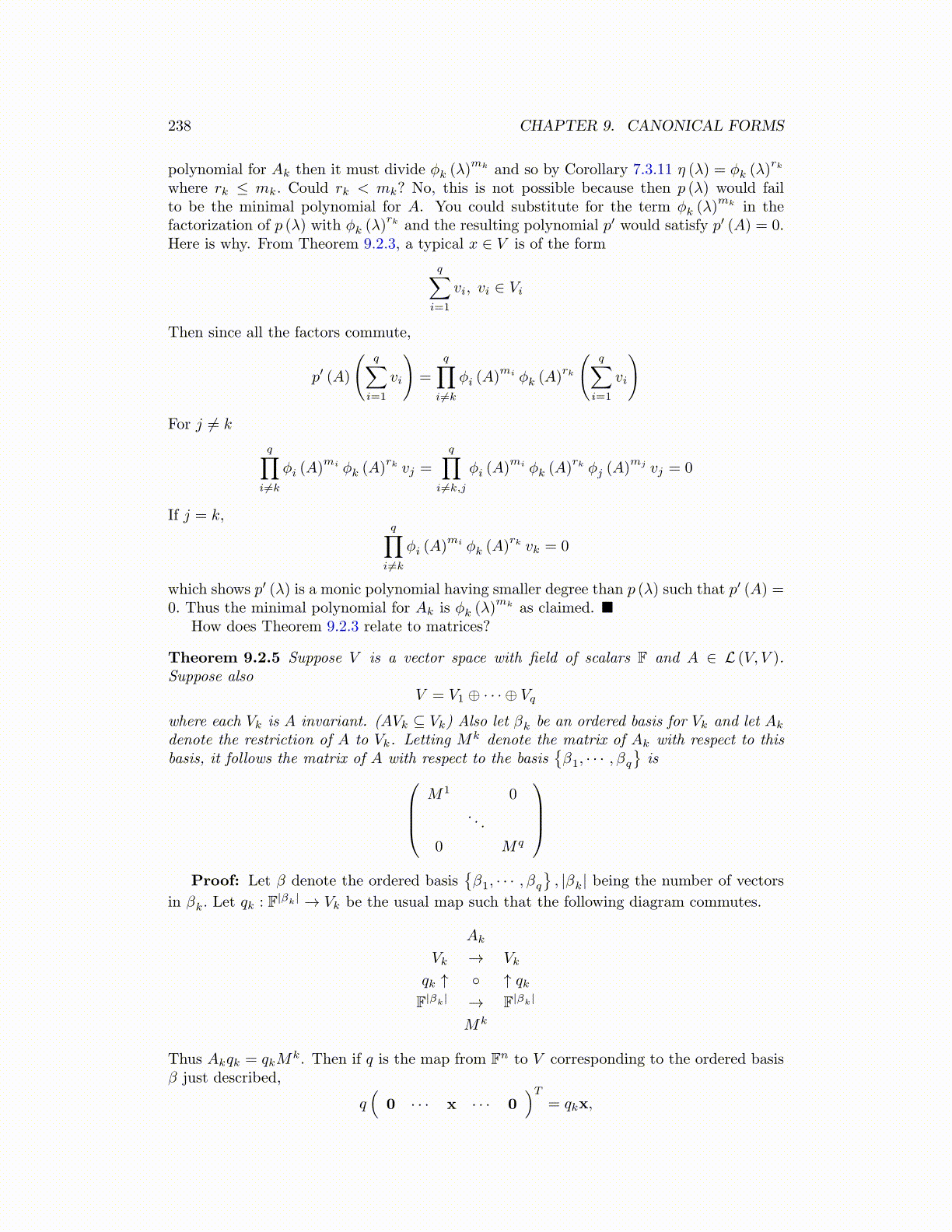
238 CHAPTER 9. CANONICAL FORMS
polynomial for Ak then it must divide ϕk (λ)mk and so by Corollary 7.3.11 η (λ) = ϕk (λ)
rk
where rk ≤ mk. Could rk < mk? No, this is not possible because then p (λ) would failto be the minimal polynomial for A. You could substitute for the term ϕk (λ)
mk in thefactorization of p (λ) with ϕk (λ)
rk and the resulting polynomial p′ would satisfy p′ (A) = 0.Here is why. From Theorem 9.2.3, a typical x ∈ V is of the form
q∑i=1
vi, vi ∈ Vi
Then since all the factors commute,
p′ (A)
(q∑
i=1
vi
)=
q∏i ̸=k
ϕi (A)mi ϕk (A)
rk
(q∑
i=1
vi
)
For j ̸= k
q∏i ̸=k
ϕi (A)mi ϕk (A)
rk vj =
q∏i ̸=k,j
ϕi (A)mi ϕk (A)
rk ϕj (A)mj vj = 0
If j = k,q∏
i ̸=k
ϕi (A)mi ϕk (A)
rk vk = 0
which shows p′ (λ) is a monic polynomial having smaller degree than p (λ) such that p′ (A) =0. Thus the minimal polynomial for Ak is ϕk (λ)
mk as claimed. ■How does Theorem 9.2.3 relate to matrices?
Theorem 9.2.5 Suppose V is a vector space with field of scalars F and A ∈ L (V, V ).Suppose also
V = V1 ⊕ · · · ⊕ Vq
where each Vk is A invariant. (AVk ⊆ Vk) Also let βk be an ordered basis for Vk and let Ak
denote the restriction of A to Vk. Letting Mk denote the matrix of Ak with respect to thisbasis, it follows the matrix of A with respect to the basis
{β1, · · · , βq
}is
M1 0. . .
0 Mq
Proof: Let β denote the ordered basis
{β1, · · · , βq
}, |βk| being the number of vectors
in βk. Let qk : F|βk| → Vk be the usual map such that the following diagram commutes.
Ak
Vk → Vk
qk ↑ ◦ ↑ qkF|βk| → F|βk|
Mk
Thus Akqk = qkMk. Then if q is the map from Fn to V corresponding to the ordered basis
β just described,
q(
0 · · · x · · · 0)T
= qkx,